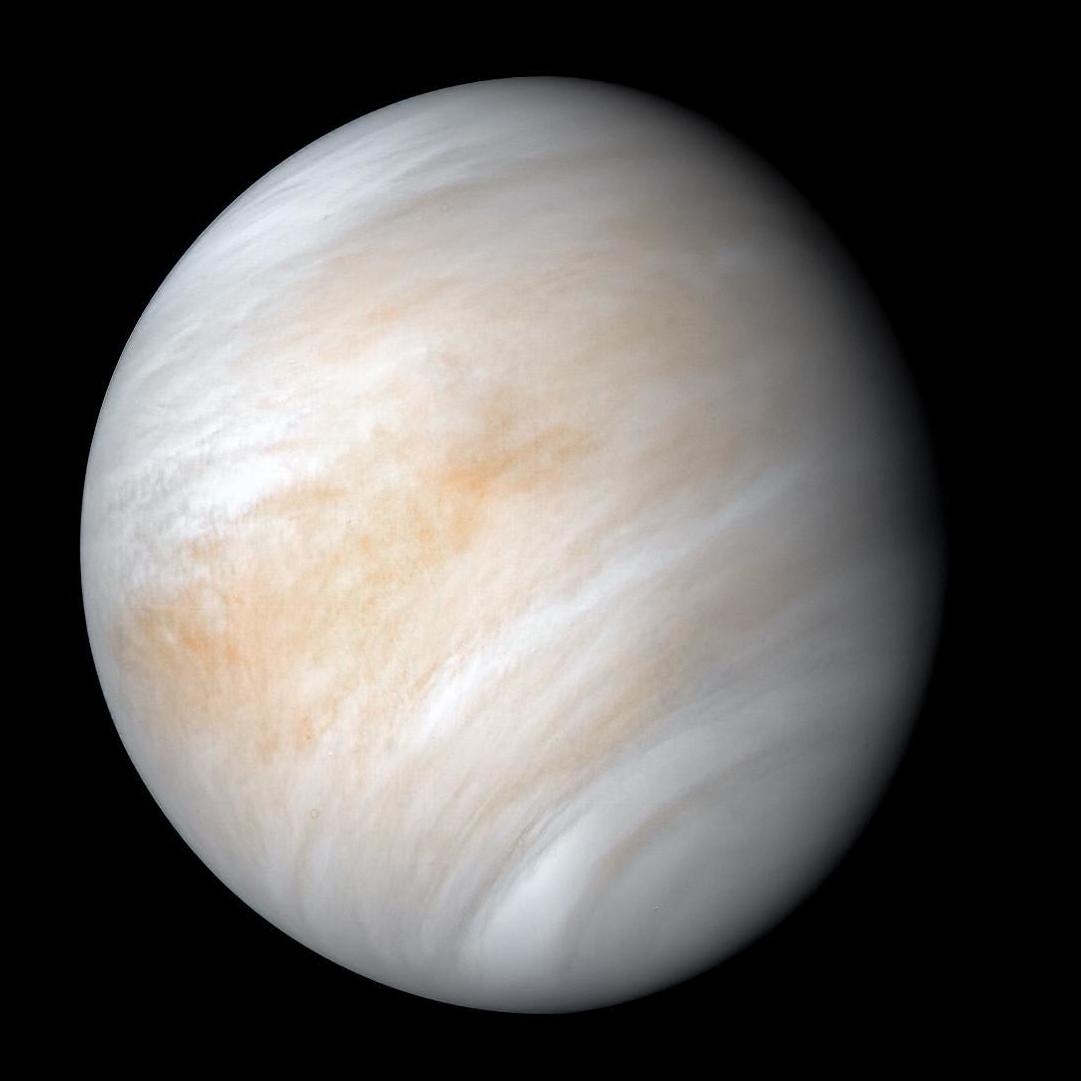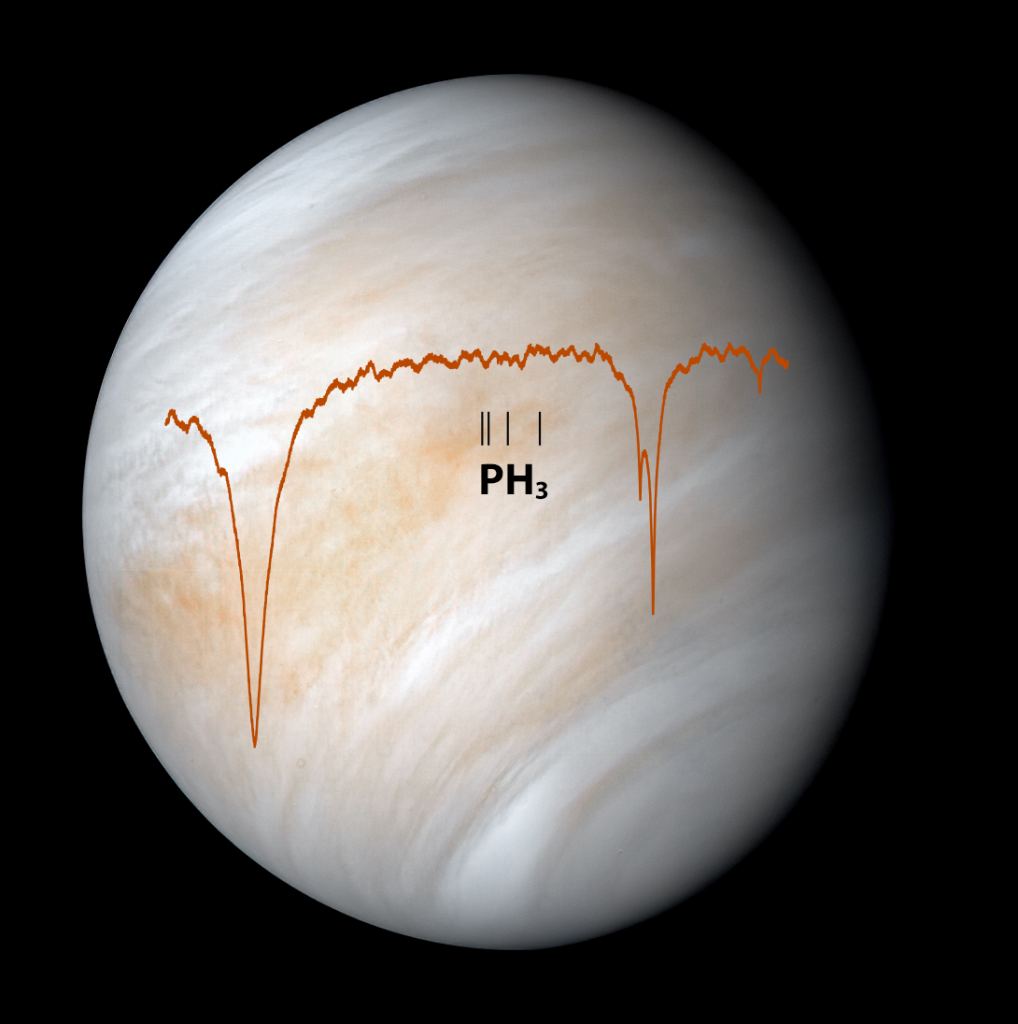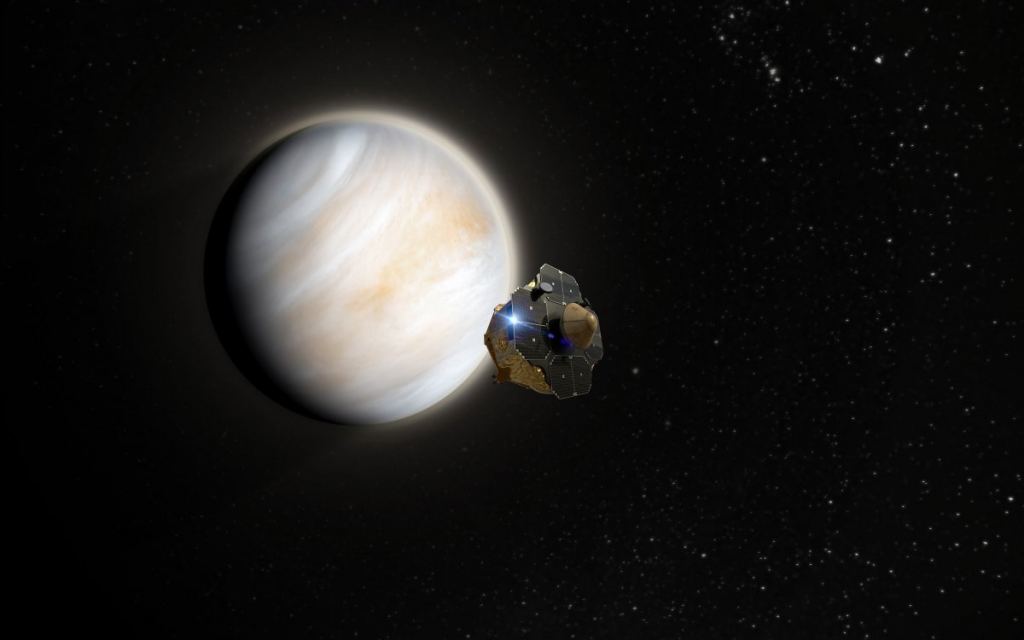The surface of Venus is like a scene from Dante’s Inferno – “Abandon all hope, ye who enter here!” and so forth. The temperature is hot enough to melt lead, the air pressure is almost one hundred times that of Earth’s at sea level, and there are clouds of sulfuric acid rain to boot! But roughly 48 to 60 km (30 to 37.3 mi) above the surface, the temperatures are much cooler, and the air pressure is roughly equal to Earth’s at sea level. As such, scientists have speculated that life could exist above the cloud deck (possibly in the form of microbes) as it does on Earth.
Unfortunately, these clouds are not composed of water but of concentrated sulfuric acid, making the likelihood that life could survive among them doubtful. However, a new study led by scientists from the Massachusetts Institute of Technology (MIT) reveals that the basic building blocks of life (nucleic acid bases) are stable in concentrated sulfuric acid. These findings indicate that Venus’ atmosphere could support the complex chemistry needed for life to survive, which could have profound implications in the search for habitable planets and extraterrestrial life.

Image from NASA’s Mariner 10 spacecraft in February 1974 as it traveled away from Venus. (Credit: NASA/JPL-Caltech)
The study was led by Professor Sara Seager, an astrophysicist and planetary scientist with the MIT Department of Earth, Atmospheric, and Planetary Sciences (EAPS) and the MIT Department of Aeronautical and Astronautical Engineering (MIT AeroAstro); and Dr. Janusz J. Petkowski, an astrobiologist and EAPS MIT Research Affiliate. They were joined by researchers with Nanoplanet Consulting, Rufus Scientific Ltd., the Worcester Polytechnic Institute (WPI), and multiple universities. The paper that presents their findings was recently published in the Proceedings of the National Academy of Sciences.

The surface of Venus captured by a Soviet Venera probe. Credit: Russian Academy of Sciences/Ted Stryk
Before the Space Age and the first robotic missions began making flybys of Venus, astronomers entertained the notion that it might be similar to Earth. Its impenetrable cloud deck was believed to be evidence of persistent rain storms, and some even speculated that the planet was a lush tropical environment. By 1961 and 62, the Soviet Venera 1 and 2 and NASA Mariner 1 and 2 probes became the first missions to buzz the planet and examine its atmosphere. These revealed an incredibly dense, scorching hot, and isothermic atmosphere – meaning there is little variation in temperature between day and night and during the course of a year.
As Dr. Petkowski told Universe Today via email, there are sulfuric acid clouds with very little water content. “Therefore, if there is life in the Venus clouds, and it still uses water as its solvent, it has to have adaptations that have no precedent here on Earth.” In a previous paper, Seager and her co-authors explored various characteristics of Venus’ clouds that would affect habitability, regardless of whether or not it was “Earth-like.” This included energy requirements (chemical and solar), radiation, the lack of available hydrogen, metals, acidity, and low water content.
As Petkowski explained, they concluded that the conditions in the Venusian clouds do not rule out life, although they do rule out Earth-like life:
“This is an important distinction, as opinions on the habitability and the possibility of life in the clouds of Venus vary widely, from calling the clouds ‘habitable’ to categorically stating that life cannot exist there. We decided to quantitatively review what we know about Venus and confront this knowledge with the basic principles of life, all of this to see if life on Venus is worth looking for by (e.g., astrobiology-focused missions), or whether life could be categorically ruled out.”

Spectral data from SOFIA overlain atop an image of Venus from NASA’s Mariner 10 spacecraft. Credit: Venus: NASA/JPL-Caltech; Spectra: Cordiner et al.
This is a key consideration for astrobiologists: the possibility that life can and does exist in environments radically different from Earth. This complicates things since scientists cannot search for evidence of life that doesn’t follow the same patterns as life here on Earth. A possible way around this is to consider “what life does rather than what it is” (processes that don’t depend on specific molecules) or constitutes life on the most basic level. This was the focus of their recent paper, said Petkowski, where they explored if organic chemistry is possible in concentrated sulfuric acid.
“Here, we were able to show that nucleic acid bases adenine, thymine, guanine, cytosine, and uracil are stable in concentrated sulfuric acid ranging from 80 to 98% concentration at room temperature. We have confirmed the stability with UV spectroscopy and NMR spectroscopy, and there was no detectable reactivity and degradation after incubation in concentrated sulfuric acid for up to 2 weeks. This result is significant because concentrated sulfuric acid is often thought to be sterile to any interesting organic chemistry. We aim to show that this is not the case. Our paper is the first step to do so.”
They note that organic chemistry is not the same thing as life, but no life can occur without it. So while this result does not indicate that life is present in Venus’ atmosphere, it confirms that organic processes necessary for life certainly can. In recent years, the apparent detection of phosphine in Venus’ atmosphere triggered a debate over whether these chemical traces (if confirmed) resulted from biological processes in action (i.e., a biosignature). This debate is still unresolved, and scientists are eagerly awaiting for future missions to investigate further.
These include NASA’s proposed Deep Atmosphere Venus Investigation of Noble gases, Chemistry, and Imaging (DAVINCI+) and Venus Emissivity, Radio Science, InSAR, Topography, and Spectroscopy (VERITAS) probes, both of which could explore Venus by 2028. China also announced plans to send a Venus Volcano Imaging and Climate Explorer (VOICE) probe to explore the geological history, evolution, and potential habitability of Earth’s “Sister Planet,” launching in 2026 and arriving by 2027. There are also proposals like the Rocket Lab Mission to Venus (scheduled for launch in January 2025), the first private mission to explore Venus’ clouds and look for signs of organics.

Artist’s impression of the Rocket Lab Mission to Venus. Credit: Rocket Lab
This will be followed by MIT’s Morning Star Missions to Venus program, a series of mission concepts that evolved from the Venus Life Finder Mission Concept study led by Professor Seager. This program will send a series of probes to Venus to study its cloud for signs of life and investigate conditions for habitability. The program will culminate in 2041 with the launch of an Atmospheric and Cloud Sample Return Mission (ACSRM), which will bring samples of Venus’ atmosphere back to Earth for detailed analysis. As Petkowski noted, these and other missions to Venus could have significant implications when it comes to the search for extraterrestrial life in the Solar System and beyond:
“Although the ribose phosphate backbone of DNA is unstable in concentrated sulfuric acid, other polymers analogous to DNA could be stable and potentially support the idea that concentrated sulfuric acid in Venus clouds could support life. This would be instead of water, the concentrated sulfuric acid would become the main liquid environment for life to thrive.
“It is currently unknown if concentrated sulfuric acid could be the solvent for life, but if it could, then it has tremendous implications for the habitability of Venus clouds and the habitability of other planets in the galaxy (exoplanets). It is quite likely that there are many more planets like Venus out there. Who knows? Maybe many of them are also habitable for some very exotic forms of life.”





